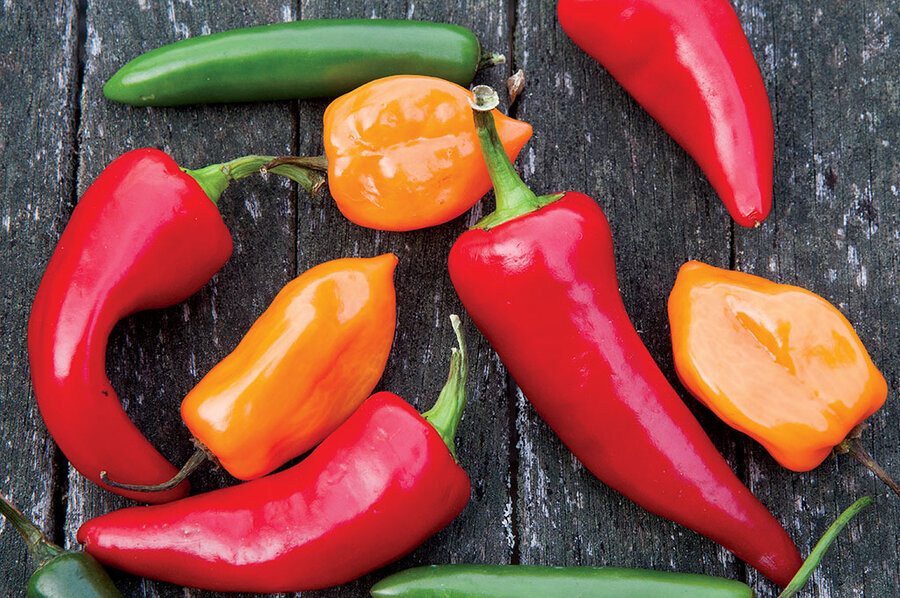Plant a peck of powerful peppers
Loading...
It’s difficult to forget your first accidental encounter with a habanero pepper. As soon as the little sliver of fruit touched my tongue, I spit it out, but it was already too late. My mouth was one raging inferno.
I spent most of an hour sucking on ice cubes, to no avail. I now know that the oil in chilies doesn’t mix with water. I should’ve used milk, yogurt, or bananas to put out the fire.
Still, that eight-alarm ordeal didn’t dampen my zeal for one of summer’s tastiest treats: chili peppers.
Hot peppers are warm-weather perennial shrubs in their native tropics, but are treated as annuals in most gardens. Remains of peppers have been found at archaeological sites as early as 7000 BC. Christopher Columbus introduced chilies to fascinated Europeans. And today, Americans spend more on chili-rich salsas than ketchup.
Although many grocery stores offer a variety of fresh and dried chilies, there is no substitute for growing your own. True New World natives, hot peppers can be grown just about anywhere their sweet-pepper cousins do well.
Northern gardeners must select early-maturing varieties that will produce a harvest before frost. Anaheim chilies with their rich flavor are a good choice. Poblanos are fairly mild and are ideal for stuffing and roasting. Spicy Thai Dragon chilies are six times as hot as jalapeños and mature in about 68 days.
Red and yellow cayenne chilies make great seasonings and perfect garden plants for the central states. The fiery, flavorful serrano chilies are excellent for making fresh salsa as well as spicing up vegetable and egg dishes. As in the North, poblano peppers are also dependable performers here.
Gardeners in milder climates have a huge selection from which to choose. The hotter the climate, the hotter the pepper. Folks in the hot, dry Southwest can produce peppers that may shoot right off the Scoville scale, which measures the concentration of capsaicin, the substance that gives chilies their “heat.” A green bell pepper rates a zero on this scale. A recent hybrid, the Carolina Reaper, tops the chart with a rating between 1.6 million and 2.2 million Scoville Heat Units.
The most courageous chili lover may want to try the Carolina Reaper, a habanero pepper crossed with an Indian variety. The less-adventurous among us might prefer a jalapeño variety – they make delicious hot pepper jelly and stuffed chili poppers.
Chilies need full sun, good drainage, and loamy soil that has been enriched with compost, aged manure, and bone meal. Set young plants out in the spring at least two weeks after your region’s last frost. To avoid infection by tobacco mosaic virus, plant your peppers well away from cantaloupes, cucumbers, or tomatoes. Water plants well and give them a good feeding with a soluble fertilizer that is high in calcium nitrate. Chilies also enjoy a dose of fish emulsion or liquid seaweed.
Fertilize monthly to ensure a continuous crop. You can harvest chilies when they are green or red, as long as they are full-sized. Cut them off the bush; don’t pull them. Be sure to wear rubber gloves when handling chilies, and never rub your eyes.





